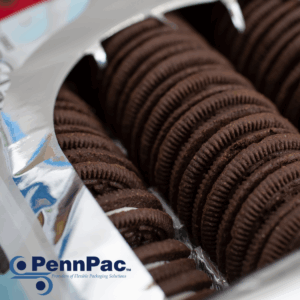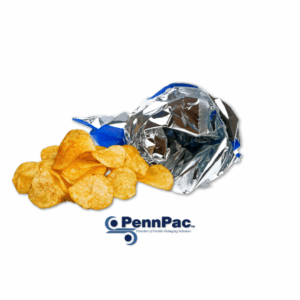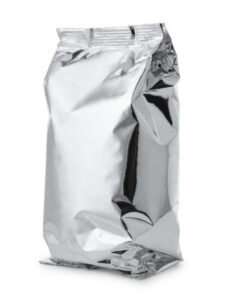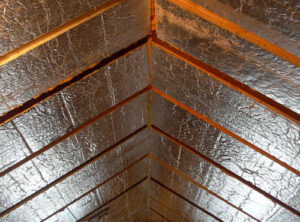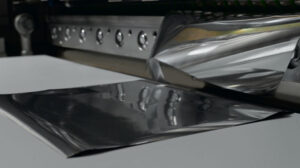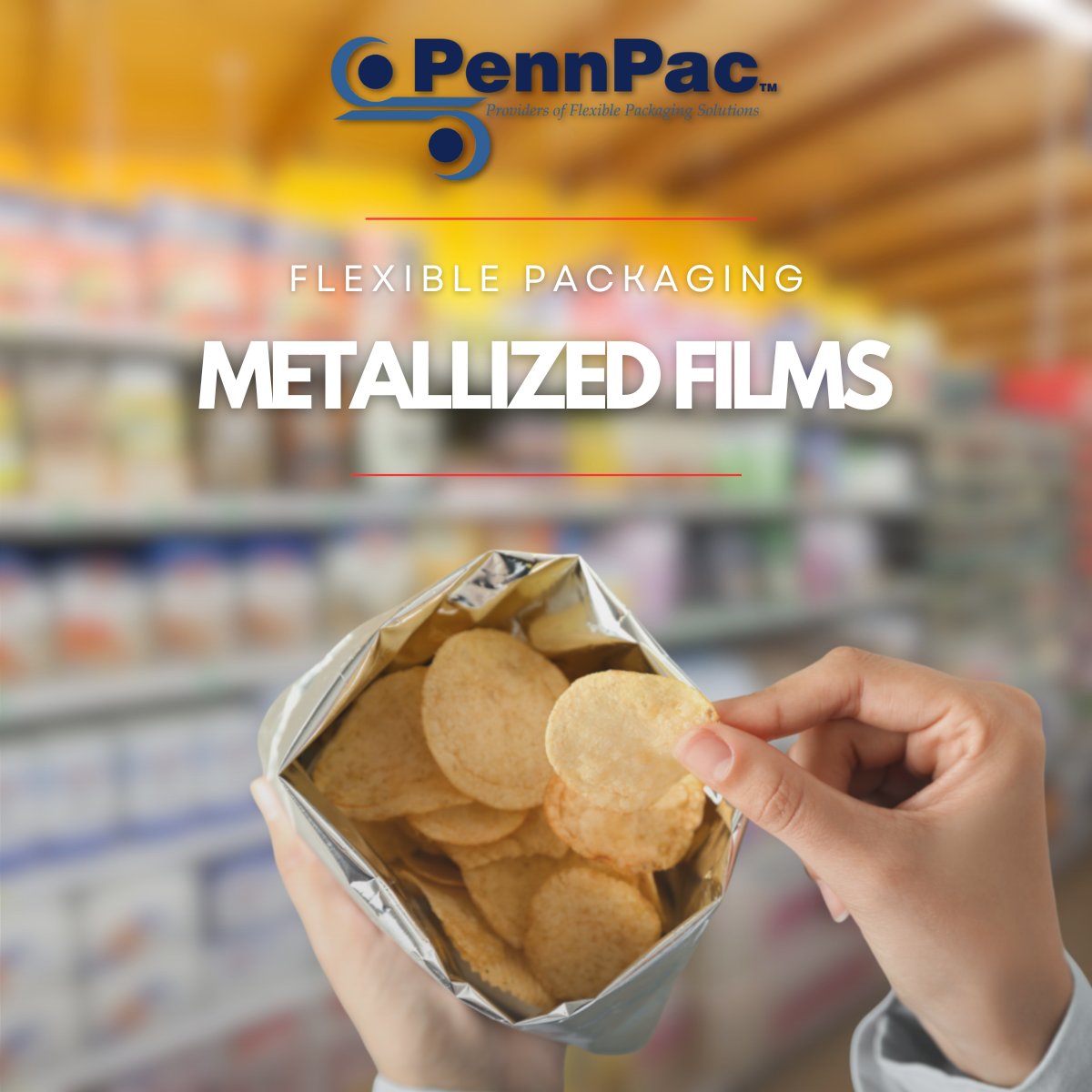
Estimated reading time: 12 minutes
Key Takeaways
- Metallized films significantly enhance the barrier properties of packaging materials, extending product shelf life.
- These films provide improved aesthetic appeal, making products more attractive to consumers.
- Metallized films are versatile, used in both food-grade and industrial applications.
- The metallization process involves vacuum deposition of metals like aluminum, offering superior protection.
- Future trends focus on sustainability and innovative applications in various industries.
Table of Contents
- Introduction
- Understanding Metallized Films
- Benefits of Metallized Films in Packaging
- High Barrier Packaging
- Food-Grade Metallized Films
- Applications of Metallized Films in Food Packaging
- Industrial Metallized Films
- Advantages of Using Metallized Films in Industrial Packaging
- Case Studies and Examples
- Future Trends in Metallized Film Packaging
- Conclusion
Introduction
Metallized films are specialized polymer films coated with a thin layer of metal, typically aluminum. This coating significantly enhances the protective and aesthetic properties of the packaging. The primary keyword for this blog post is metallized film applications. In this blog, we will delve into the various uses of metallized films, focusing particularly on food-grade metallized films and industrial metallized films. These films play a crucial role in preserving products and extending their shelf life, making them invaluable in modern packaging solutions. For a deeper understanding of metallized film performance, refer to Metallized Films: Enhancing Packaging Performance and Extending Shelf Life.
Understanding Metallized Films
What Are Metallized Films?
Metallized films refer to polymer substrates, such as BOPP (Biaxially Oriented Polypropylene) BOPP Films: The Ultimate Solution in Flexible Packaging and BOPET (Biaxially Oriented Polyethylene Terephthalate), that are coated with an ultra-thin metal layer, usually around 0.1 microns in thickness. The most common metal used for this purpose is aluminum, although nickel and chromium may also be employed for specific applications. This metallization process not only enhances the film’s visual appeal but also provides significant advantages in barrier properties.
The Metallization Process
The metallization process involves the vacuum deposition of metal onto the film surface. This technique effectively retains the film’s flexibility while simultaneously enhancing its barrier properties. As a result, metallized films become excellent choices for applications requiring durability and protection. The technological advances in the metallization process have allowed for high-quality coatings that can provide a range of properties desired in both food and industrial packaging.
More insight into the metallization process can be found here.
Benefits of Metallized Films in Packaging
Enhanced Barrier Properties
One of the most significant advantages of using metallized films in packaging is their enhanced barrier properties. They can dramatically reduce both oxygen transmission and moisture transmission, with reductions of 100 to 500 times and 50 to 200 times, respectively, compared to uncoated films. This ability to act as a high barrier is crucial for extending the shelf life of products, particularly perishable items like food and beverages.
This high barrier capability is further explored in High Barrier Films for the Flexible Packaging Market.
For instance, products wrapped in metallized films experience less spoilage, preserving both quality and freshness for longer periods. To see more on barrier properties, read this article.
Improved Aesthetic Appeal
Metallized films offer a shiny, glossy appearance that attracts consumer attention. This aesthetic appeal is significantly beneficial for branding and high-quality printing, allowing products to stand out on crowded shelves. The metallic finish provides a sense of premium quality, making metallized films ideal for luxury food items and other high-value products.
Increased Durability and Protection
Metallized films offer excellent protection against UV light, odors, and contaminants, ensuring the integrity of the enclosed products. This increased durability makes them suitable for a wide range of applications, from consumer goods to critical industrial components. The protective features ensure that products maintain their intended shelf life and quality, reducing waste and improving consumer satisfaction.
High Barrier Packaging
What is High Barrier Packaging?
High barrier packaging consists of materials designed specifically to prevent the permeation of gases, moisture, and light. This is crucial for preserving sensitive products, which can deteriorate quickly without proper protection. The incorporation of metallized films enhances these properties, ensuring that sensitive items, such as food and pharmaceuticals, remain safe from external influences.
How Metallized Films Contribute
Metallized films contribute to high barrier packaging through their unique metal layers and multi-layer constructions. This design significantly enhances impermeability, making metallized films ideal for a variety of products. Coffee, snacks, confectionery, pharmaceuticals, and electronics are prime examples requiring high barrier packaging to maintain quality and shelf life.
Food-Grade Metallized Films
Characteristics of Food-Grade Metallized Films
Food-grade metallized films are designed using food-safe polymers and metals, ensuring compliance with serious food safety regulations like those set by the FDA and EU. This compliance is crucial for maintaining consumer safety and product integrity.
Benefits of Food-Grade Metallized Films
The benefits of using food-grade metallized films are extensive. They effectively extend the shelf life of food products by preventing oxygen and moisture ingress. Additionally, these films protect the flavor and freshness of products while blocking UV-induced degradation. This ensures that consumers receive high-quality products that maintain their taste and nutritional value over time.
Applications of Metallized Films in Food Packaging
Common Uses of Metallized Films
The applications of metallized films in food packaging are numerous and include uses in packaging for snacks, baked goods, confectionery, flexible pouches, and wrappers. These films allow for creative packaging solutions that enhance product preservation and marketing.
Advantages Over Traditional Materials
Compared to traditional packaging materials, metallized films offer several advantages:
- Lighter weight: They reduce shipping costs and are easier to handle.
- Cost-effective: Lower production costs associated with the material and manufacturing.
- Superior barrier qualities: Significantly enhances product protection.
- Enhanced visual appeal: Attracts consumers with a shiny and luxurious look.
- Better printability: Suitable for high-quality branding and graphics.
These advantages make metallized films a preferred choice in modern packaging. For further exploration of advantages over traditional materials, visit this article.
Industrial Metallized Films
Overview of Industrial Applications
Industrial metallized films are employed in packaging sensitive industrial products, such as electronics, textiles, and automotive parts. These films protect valuable components from moisture, oxygen, UV light, and contamination, ensuring their integrity during transportation and storage.
Advantages of Using Metallized Films in Industrial Packaging
Superior Barriers
Metallized films provide superior barriers that prevent damage from environmental factors. They ensure that industrial products maintain their quality and functionality during transit and in storage.
Enhanced Branding and Presentation
The customizable finishes of metallized films enhance branding and product presentation. Companies can create unique packaging that effectively communicates their brand identity.
Cost-Effectiveness
Metallized films can be more economical compared to alternative barrier materials due to their lower material weight and production costs. This ultimately leads to savings across the supply chain.
Sustainability Aspects
Metallized films are often recyclable and contribute to reduced material usage, promoting eco-friendly packaging solutions. As more companies seek to enhance their sustainability efforts, metallized films become increasingly relevant.
Case Studies and Examples
Real-World Examples
Several real-world instances showcase how metallized films have successfully enhanced the shelf life of food products or protected sensitive electronics during shipping. For instance, companies packaging snack foods using metallized films have reported significant reductions in spoilage and increased customer satisfaction due to the preservation of flavor and freshness.
Success Stories
Specific cases from sectors such as snack food packaging and high-value industrial components illustrate how metallized films have effectively solved packaging challenges. Companies utilizing these films often see improved outcomes, reinforcing the value of metallized film applications in various industries.
Future Trends in Metallized Film Packaging
Innovations in Technology
The future of metallized films looks promising with innovations centering around improved recyclability, bio-based polymer substrates, and enhanced barrier technologies. As technology evolves, the performance and sustainability of metallized films will continue to improve.
Emerging Applications
There is an expansion into new markets such as pharmaceuticals and cosmetics, where the need for high barrier and safe packaging is growing. Additionally, innovative eco-friendly packaging solutions are emerging, aiming to meet the demands of environmentally-conscious consumers.
Market Growth Projections
The demand for metallized film applications across various industries is expected to grow significantly. As more businesses recognize the benefits of these films, investments in production and research will likely increase.
Conclusion
In summary, metallized film applications offer a wide range of advantages, including enhanced barrier properties, aesthetic appeal, and protection for both food-grade and industrial packaging. As companies continue to pursue product safety and consumer appeal, the importance of metallized films will only grow. Continued technological advancements and sustainability efforts are shaping the future of metallized film applications, positioning them as a critical component in modern packaging strategies.
For further insights into the subject, feel free to contact us to start your conversation today!
FAQ
What are metallized films?
Metallized films are polymer substrates coated with a thin layer of metal, typically aluminum, which enhances their protective and aesthetic properties, making them ideal for various packaging applications.
How do metallized films enhance packaging?
They provide superior barrier properties against oxygen and moisture, improve durability against UV light and contaminants, and offer a shiny, attractive appearance that boosts product appeal.
What are the benefits of food-grade metallized films?
Food-grade metallized films extend the shelf life of food products by preventing oxygen and moisture ingress, protect flavor and freshness, and comply with stringent food safety regulations.
Which industries utilize metallized films?
Industries such as food and beverage, pharmaceuticals, electronics, textiles, and automotive parts use metallized films for their packaging needs due to their enhanced protective and aesthetic qualities.
What are the future trends in metallized film packaging?
Future trends include innovations in recyclability and bio-based substrates, expansion into new markets like cosmetics and pharmaceuticals, and the development of eco-friendly packaging solutions.

